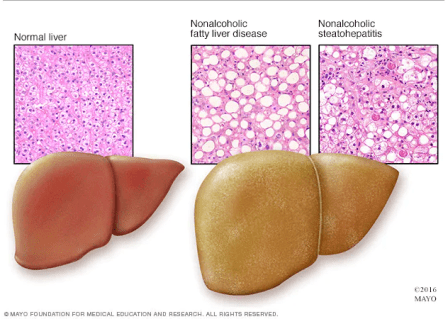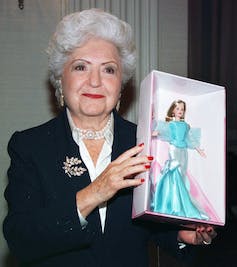Cirrhosis is often caused by long-term, chronic use of alcohol. However, some people who consume little, or even no alcohol, can develop cirrhosis. Many people unknowingly live with a condition called nonalcoholic fatty liver disease (NAFLD), which can lead to a more severe, aggressive condition called nonalcoholic steatohepatitis (NASH).
In patients with NASH, the liver becomes inflamed and can progress to advanced scarring (cirrhosis) and liver failure.
Nonalcoholic fatty liver disease (NAFLD) is the most common chronic liver disease in the world. NAFLD is a buildup of extra fat in the liver that is not caused by alcohol use.
The global prevalence of NAFLD is 30 percent and is on the rise around the world. In the United States, approximately 75 to 100 million people are affected by NAFLD, and rates are rising. Hispanic people are among those most impacted, according to experts.
“We know that Hispanics have a genetic predisposition to develop fatty liver disease, specifically people from Mexico, compared to other countries from Latin America,” says Blanca Lizaola-Mayo M.D., medical director of the Liver Transplant Center at Mayo Clinic in Arizona.
“There is a report of 48% of the U.S. Hispanic population has fatty liver disease, meaning that almost half of the Hispanics who live in the United States have metabolic syndrome and fatty liver disease, and many of them don’t even know that they have it,” Dr. Lizaola-Mayo says.
The silent disease
Nonalcoholic fatty liver disease is referred to as a “silent disease” because often there are no symptoms. However, as the disease progresses, symptoms may include feeling weak, loss of appetite, and nausea.
NAFLD is also on the rise among children. It is currently the most common liver disease in children in the U.S., affecting an estimated 8 million children and adolescents. Risk factors include obesity, high cholesterol, insulin resistance, and high blood sugar levels.
“We believe that this is related to the lack of exercise and physical activity,” Dr. Lizaola-Mayo says. “We’re seeing more kids watching television, playing video games, instead of being outside playing. And also their diet is super important.”
Prevention
To protect against nonalcoholic fatty liver disease, experts recommend maintaining a healthy weight, eating a healthy diet, and getting regular exercise. Risk factors include obesity, high cholesterol, diabetes and high blood pressure. Experts say if caught early, lifestyle changes alone can control or even reverse the fat buildup in the liver. A blood test at your doctor’s office to check liver enzyme levels can help determine your risk level. Further testing may be needed to determine your diagnosis. can help determine your risk level. Further testing may be needed to determine your diagnosis.




